The most endangered animal species. The rarest species of animals. The rarest animal species
On the verge of extinction: top 15 rare animals
World Animal Day, designed to unite people's efforts to preserve the animal world of our planet and protect the rights of domestic animals, is celebrated on October 4. Every day dozens of flora and fauna are disappearing on Earth. One of the ways to fight for the preservation of biodiversity on our planet is to protect rare and endangered species of plants and animals.
The snow leopard (irbis) is a rare, small species. In the Red Book of the Russian Federation, it is assigned the first category - “a species that is in danger of extinction at the limit of its range.” The total number of snow leopards in Russia, according to WWF (World Wildlife Fund) experts, is no more than 80-100 individuals.
The Amur tiger is one of the rarest predators on the planet, the largest tiger in the world, the only representative of the species living in the snow. The Amur tiger is listed in the International Red Book; in Russia, these animals live only in the Primorsky and Khabarovsk territories. According to the latest census, the population of the rare animal in the Russian Federation numbers about 450 individuals.
The Far Eastern leopard is a subspecies of leopards of the class of mammals, order of carnivores, of the cat family. This is one of the rarest representatives of the cat family in the world. Many experts consider the Far Eastern leopard to be the most beautiful subspecies of leopards and often compare it to the snow leopard. The south of Primorsky Krai is the only habitat of the Far Eastern leopard in Russia. According to the latest census, there are currently about 50 leopards living in the Ussuri taiga. Scientists from many countries and WWF are concerned about the conservation of the endangered species.
Pallas's cat - a rare predator of the steppes and semi-steppes of Eurasia - is listed in the international and Russian Red Books. This wild cat has a status close to endangered. According to scientists, the animal's population is declining. In addition, it is threatened by poachers, and there is a threat of disappearance of suitable habitats. Russia is the northernmost habitat of this animal; here the Pallas's cat is found mainly in the mountain-steppe and desert-steppe landscapes of the southeast of the Altai Republic, in the republics of Tuva, Buryatia, as well as in the southeastern part of the Trans-Baikal Territory.
The Komodo dragon is a species of lizard from the monitor lizard family, the largest lizard in the world fauna. According to one hypothesis, it was the monitor lizards of the Indonesian island of Komodo that served as the prototype of the Chinese dragon: an adult Varanus Komodoensis can exceed three meters in length and weigh more than one and a half centners. This largest lizard on Earth, which can kill a deer with one blow of its tail, is found only in Indonesia and is one of the endangered species of animals.
Over the past 20 years, the number of Sumatran rhinoceroses has decreased by about 50% due to poaching and deforestation. Currently, only about 200 representatives of this species live in Southeast Asia. There are five species of rhinoceros known in the world: three in South and Southeast Asia and two in Africa. All species of rhinoceroses are listed in the Red Book of the International Union for Conservation of Nature. WWF reported in October this year that one species of rhinoceros - the Javan - was completely destroyed in Vietnam.
The loggerhead is a species of sea turtle, the only member of the genus loggerhead, or loggerhead sea turtle. This species is widespread in the waters of the Atlantic, Pacific and Indian oceans, in the Mediterranean Sea; loggerhead can be found in the Far East (Peter the Great Bay) and in the Barents Sea (near Murmansk). The meat of this turtle was considered far from the most delicious; only local tribes consumed it, but its eggs were a delicacy. Their unlimited collection has led to a very serious decline in the number of this turtle species over the past 50-100 years. This species of turtle is listed in the Convention on International Trade in Species of Wild Flora and Fauna and in the Red Book and is protected by the laws of Cyprus, Greece, the USA, and Italy.
The sea otter, or sea otter, is a predatory marine mammal of the mustelid family, a species closely related to otters. The sea otter has a number of unique features of adaptation to the marine environment, and is also one of the few non-primate animals that use tools. Sea otters live on the northern shores of the Pacific Ocean in Russia, Japan, the USA and Canada. In the 18th-19th centuries, sea otters were subjected to predatory extermination because of their valuable fur, as a result of which the species was on the verge of extinction. In the twentieth century, sea otters were listed in the Red Book of the USSR, as well as in the protection documents of other countries. As of 2009, hunting sea otters is virtually prohibited in all regions of the world. Only the indigenous population of Alaska - the Aleuts and Eskimos - are allowed to hunt sea otters, and exclusively to support the folk crafts and food diet that have historically developed in this region.
The bison is the heaviest and largest land mammal on the European continent and the last European representative of the wild bull. Its length is 330 cm, height at the withers is up to two meters, and its weight reaches one ton. Destruction of forests, increasing density of human settlements and intensive hunting in the 17th and 18th centuries exterminated the bison in almost all European countries. At the beginning of the 19th century, wild bison apparently remained only in two regions: the Caucasus and Belovezhskaya Pushcha. The number of animals was about 500 and declined over the course of the century, despite protection by the Russian authorities. In 1921, as a result of the anarchy during and after the First World War, the bison were finally exterminated by poachers. As a result of the targeted activities of many specialists, as of December 31, 1997, there were 1,096 bison in the world in captivity (zoos, nurseries and other reserves), and 1,829 individuals in free populations. The IUCN Red Book classifies this species as vulnerable; in Russia, the Red Book (1998) placed the bison in category 1 - endangered.
The African wild dog, or hyena-like dog as it is also called, was once widespread throughout the African steppes and savannas of sub-Saharan Africa, from southern Algeria and Sudan to the extreme southern tip of the continent. The wild dog is included in the Red Book of the International Union for Conservation of Nature as a small species that is in danger of extinction.
The Florida puma, along with other representatives of its subspecies, is listed in the International Red Book. Hunting for it is prohibited; in addition, the animal is included in Appendix II of the CITES convention, which regulates trade in rare species of animals. Previously, the puma inhabited territories in the south of North America, as well as Central and South America up to Chile. At the same time, a separate population existed in Florida. In the 60s of the last century, due to shooting and development of natural areas, the number of Florida pumas decreased to 20-30 individuals. Thanks to conservation efforts for these small wild cats with their distinctive long legs, the population currently stands at 100-160 individuals.
The California condor is a very rare species of bird from the American vulture family. The California condor was once distributed throughout the North American continent. In 1987, when the last free-living condor was captured, the total number was 27. However, thanks to good reproduction in captivity, they began to be released again in 1992. As of November 2010, there were 381 condors, including 192 birds in the wild.
Orangutans are representatives of arboreal apes, one of the close relatives of humans. Unfortunately, orangutans are endangered in the wild, mainly due to ongoing habitat destruction. Despite the creation of national parks, deforestation continues. Another serious threat is poaching.
The last wild Przewalski's horses disappeared from nature in the 1960s, by which time they survived only in the desert regions of Dzungaria - on the border of China and Mongolia. But a thousand or more years ago, these animals were widespread in the steppe zone of Eurasia. Currently, there are only about two thousand individuals in the world kept in zoos. About 300-400 more horses live in the steppes of Mongolia and China, also descending from animals from zoos.
The gray whale is listed in the Red Book of the Russian Federation. Whales live in the North Pacific Ocean, making regular seasonal migrations. These sea animals are record holders for the longest range of movements: a whale swims an average of 16 thousand kilometers per year. At the same time, the whale is quite slow-moving, its usual speed is 7-10 kilometers per hour. According to zoologists, the maximum recorded lifespan of the gray whale was 67 years.
Based on materials from Inosmi.ru
To protect the animal and plant world from themselves is truly a grimace of the fate of humanity. Somewhere there was an invisible border between good and evil, between destroyers and defenders. And on the other side of this border there are people who are unable to understand that we are no better than all other creations of nature. That you cannot kill the mother of the cubs for the sake of the skin, or throw away a still living sturgeon with its belly gutted for black caviar. That it is impossible, for the sake of profit, to simply not build sewage treatment plants and kill all living things around. Throw fuel oil into the water area and pretend that you simply don’t see birds, fish, and animals dying in agony.
You can talk long and tediously about anthropogenization, count the losses of flora and fauna, but behind this you cannot see the eyes of animals choking on oil, the fading gaze of a tiger killed for fun, and simply the disappearance without a trace of hundreds of thousands of animals and plants.
A person needs to decide for himself at what price he wants to be the master of this planet, and understand that this price ultimately includes his life. This is why the International Red Book was created, and this is why the Red Book of Russia was created.
The definition “The Red Book is an annotated list of rare and endangered animals, plants and fungi” sounds dry and impersonal. And the more tragic is the long list included in it:
- extinct species;
- species extinct in the wild;
- species on the verge of extinction;
- endangered species;
- vulnerable species.
Nevertheless, the compilation of such books is an urgent need, since they are the basis for protective legislation.
Endangered animals from the Red Book of Russia for children
It is necessary to cultivate love and respect for living nature from an early age. This is why books written specifically for children are so relevant and in demand: “Animals from the Red Book of Russia”, “Plants from the Red Book of Russia” and others.
The Red Book of Russia contains a detailed description of animal species that are threatened with extermination or complete extinction, species whose numbers sometimes do not exceed several dozen individuals.
The list of such species, unfortunately, is very large, and entire book volumes are required to describe them all. Therefore, we will consider only some representatives of fauna protected by the Red Book.
The red wolf, also known as the mountain dog, is the only representative of the Cuon genus of the canine family that has survived to this day. This rare species, now found only in the Primorsky Territory, is teetering on the brink of extinction. Beautiful long hair with a copper-red tint, coupled with the rarity of these animals, make them a favorite target of “real hunters” (in other words, poachers).
Manul is a huge wild long-haired and very fluffy cat, whose habitat extends to Transbaikalia, Altai and the Republic of Tyva. There are Siberian, Central Asian and Tibetan varieties of this animal.
![]()
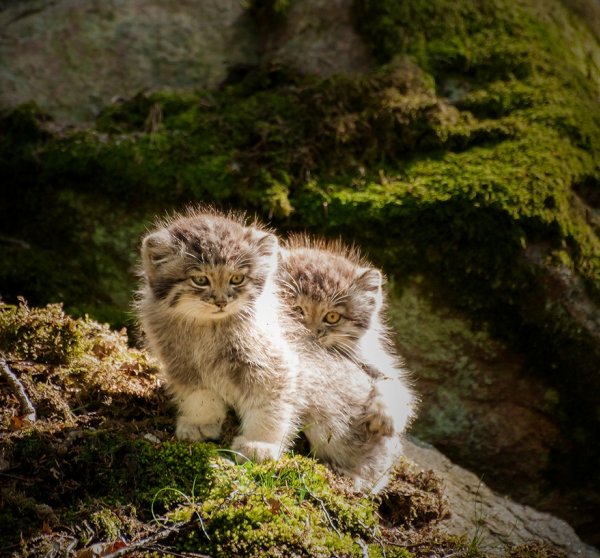



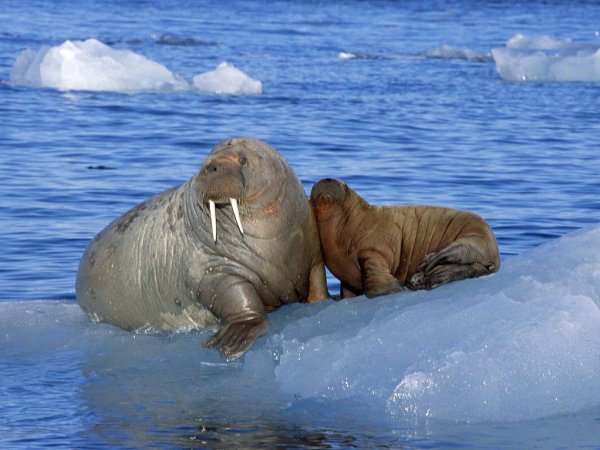
Protected plants from the Red Book of Russia with photos and names
Active human economic activity has dispersed and destroyed not only many animals, it consistently and methodically contributes to the destruction of the country's plant resources. In addition to the direct impact on flora, changes in natural landscapes (deforestation, drainage of swamps, changes in river beds) inevitably lead to climate changes. The latter are the cause of the extinction of native plant species.
The first necessary measure for the conservation of rare and endangered species is their complete inventory and inclusion in the Red Book of Russia. At the moment, the list of protected plants includes the names of more than 500 representatives of the Russian flora belonging to the following departments:
- angiosperms;
- gymnosperms;
- ferns;
- lycophytes;
- bryophytes;
- lichens;
- mushrooms
One of the most mysterious plants affected by human activity is considered to be true ginseng. There are many interesting legends about him. The status of “panacea” (translation from Latin) and “root of life” is on the verge of extinction.

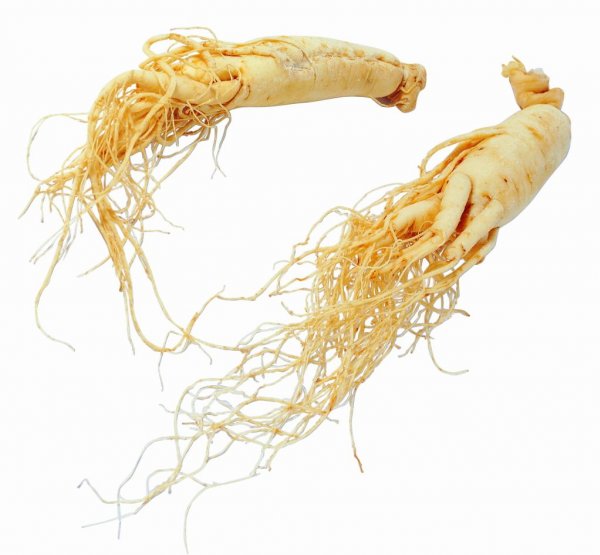
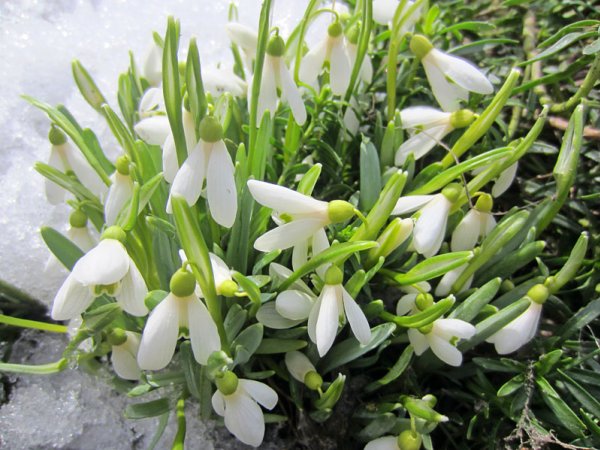


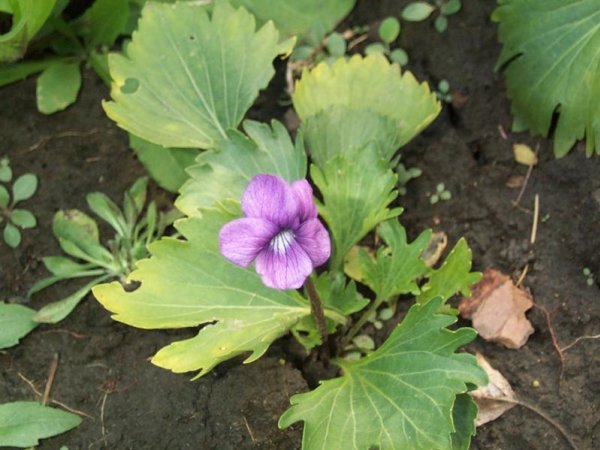



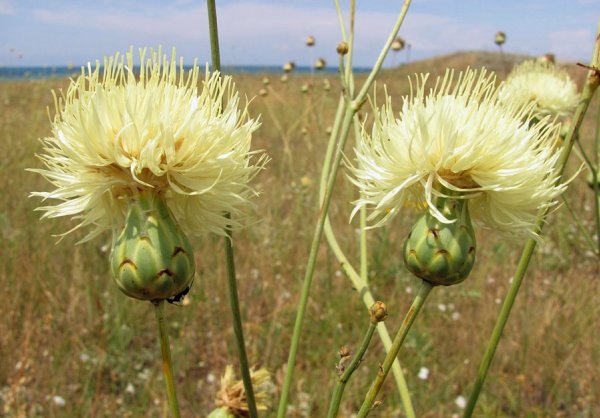
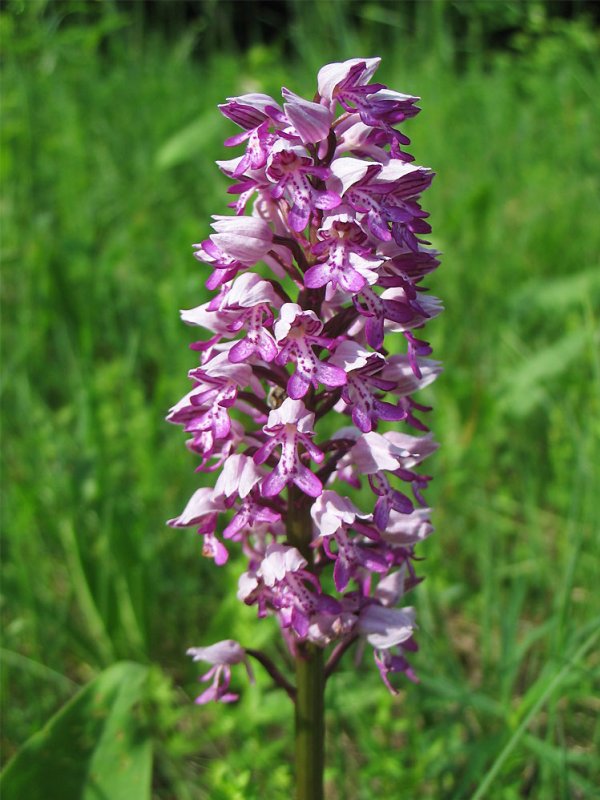
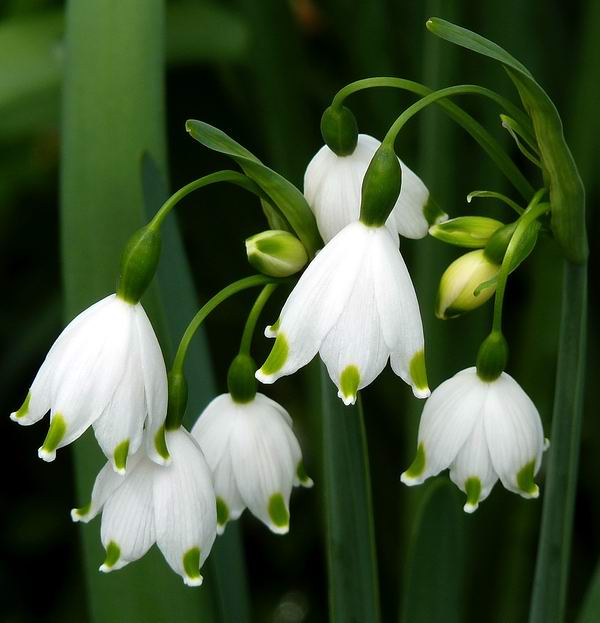




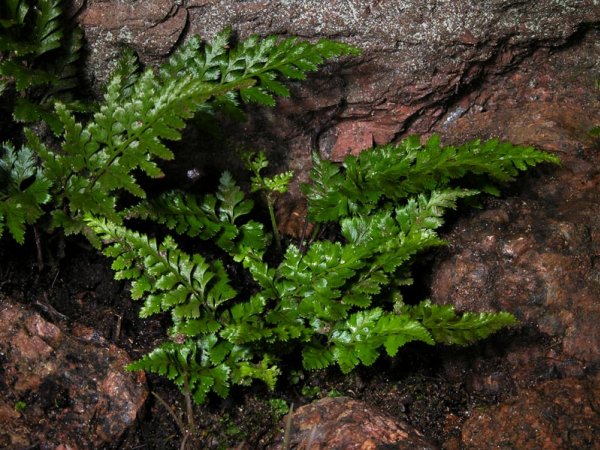

Rare birds listed in the Red Book of Russia
Strictly speaking, birds are included in the list of the fauna section of the Red Book of Russia and are considered along with other classes of animals.
The list of species included in the Red Book includes more than 120 species of various birds that are subject to protection. A significant part of the list consists of birds of prey, a little less - waterfowl species, as well as representatives of the passerine order.
The status of the populations of many of them is determined by six categories of status:
- 0—probably extinct species;
- 1—endangered species;
- 2—species declining in numbers;
- 3 - rare species;
- 4—species of uncertain status;
- 5—recoverable and recovering species.
Russia's largest seabird, the white-backed albatross, is considered an endangered species. Habitat: Sakhalin, Kamchatka, Commanders, Kuril Islands and Primorsky Territory.



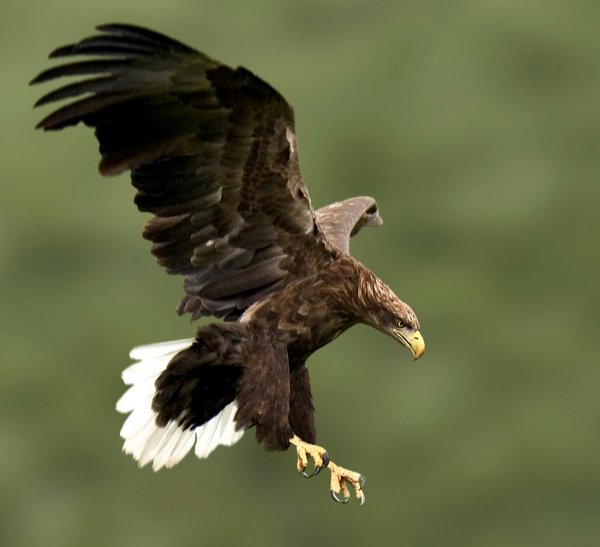

Only a small part of the list of protected species includes such representatives of rare and endangered birds as:
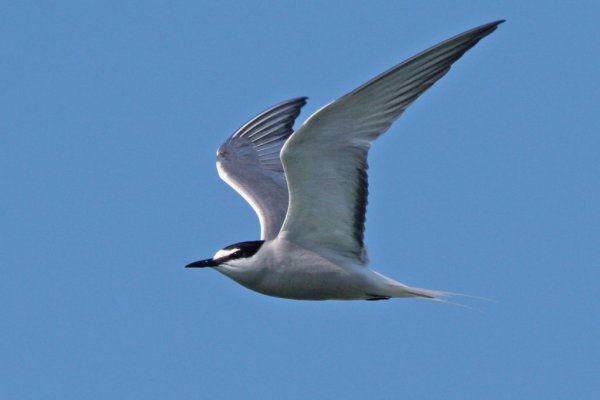
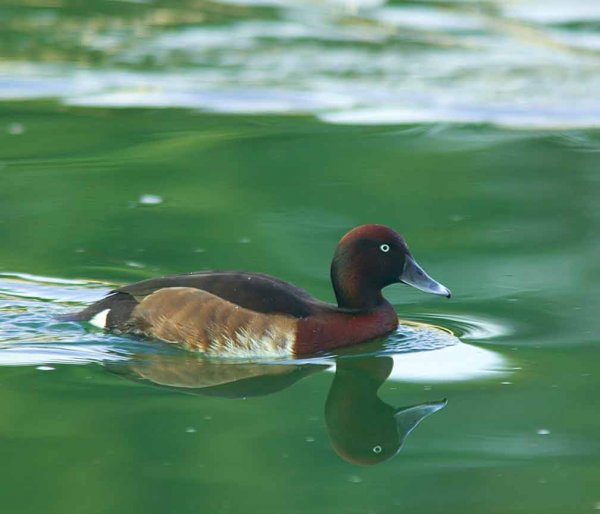


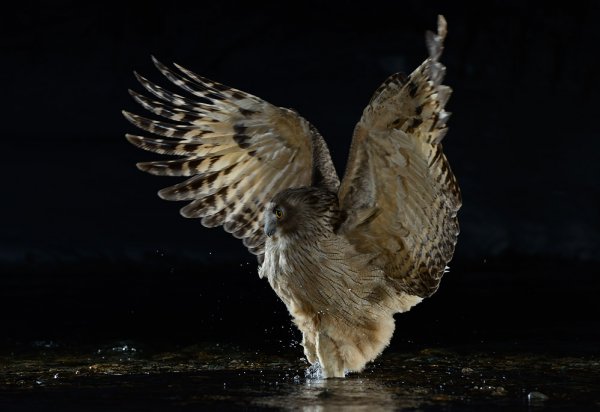


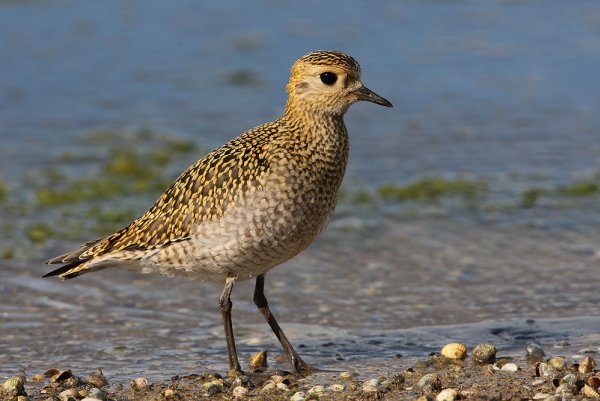



You looked at a selection of photos of animals and plants from the Red Book of Russia with descriptions. More photos can be seen in the section
Animal Protection Day, which is designed to unite people in their conservation, as well as the protection of their rights, is usually celebrated on October 4. On Earth, dozens of different representatives of fauna and flora disappear every day. Today, many rare animal species are protected at the state level.
Amur tiger
Some rare species are representatives known to many. Among them is this one of the rarest predators on Earth, the largest tiger in the world, in addition, the only representative of this species that lives in the snow. In Russia, these animals live only in the Khabarovsk and Primorsky territories. In the Russian Federation, the population of this rare animal numbers approximately 450 individuals.
Snow Leopard
This is a small, rare species listed in the Red Book of the Russian Federation. The conservation of rare species of animals of this species is today carried out at the state level. Their total number in our country, according to general expert estimates, is about 100 individuals.
Far Eastern leopard
These rare species of animals are a subspecies of leopards, belonging to the class of mammals, the cat family, and the order of carnivores. These are some of the rarest representatives of the cat family on the entire planet. Some experts consider the Far Eastern leopard the most beautiful among all species and often compare it with 
It is worth noting that the south of Primorsky Krai is the only habitat in our country. According to the census, there are currently about fifty individuals of this leopard living in the area. Scientists from different countries are concerned that the disappearance of rare animal species is very difficult to stop.
Manul
Pallas's cat is a rare predator of the semi-steppes and steppes of Eurasia. It is listed in the Russian and international Red Books. This species has received a status close to endangered. Scientists say that the number of these animals is rapidly declining. In addition, it is threatened by poachers, which is why rare species of animals are protected. In our country there is the northernmost habitat of the Pallas's cat; here it is mainly found in the desert-steppe and mountain-steppe landscapes of Altai, in Buryatia, Tuva, and also in the southeast of the Trans-Baikal Territory.
Sumatran rhinoceros
The number of Sumatran rhinos has declined by almost 50% over the past twenty years, due to tropical deforestation and poaching. Currently, approximately 200 representatives of this species live in southeast Asia. 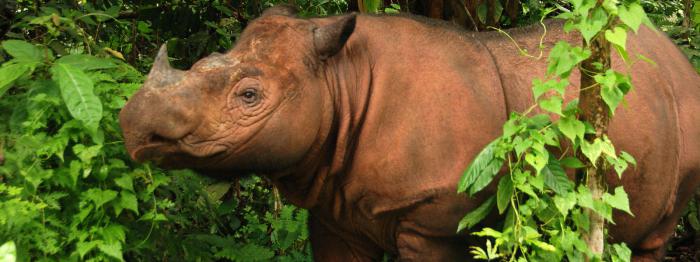
There are only 5 species of rhinoceroses known in the world: 2 in Africa, and 3 in Southeast and South Asia. These rare animal species are included in the Red Book. Last October, WWF reported that the Javan rhinoceros in Vietnam had been wiped out.
Komodo dragon
A species that belongs to the family of monitor lizards, the largest lizard. There is a hypothesis that Komodo monitor lizards are the prototype of the real Chinese dragon: Varanus Komodoensis in adulthood can exceed three meters in length and weigh about 1.5 centners. This is the largest lizard on the planet, which kills a deer with one blow of its tail. It is found exclusively in Indonesia, and is classified as an endangered animal.
Loggerhead
When discussing what rare species of animals exist, one cannot fail to mention the loggerhead. This is a species of sea turtle that is the only member of the loggerhead turtle, which is also called loggerhead sea turtle. This species is distributed in the waters of the Indian, Pacific and Atlantic oceans, as well as in the Mediterranean Sea. In addition, it can be found in Peter the Great Gulf in the Far East and in the Murmansk area in the Barents Sea. 
The meat of this turtle is not the most delicious, and it is consumed exclusively by local tribes. Interestingly, her eggs were considered a delicacy for a long time. Speaking about what is the rarest species of animal, it should be mentioned that the unlimited collection of loggerhead eggs has led to a significant reduction in the number of this species of turtle over the past 100 years. It is listed in the Red Book and in the Convention on International Trade in Various Species of Wild Fauna and Flora, in addition, it is protected by the laws of Greece, Cyprus, Italy, and the USA.
Sea otter
Or the sea otter, is a marine predatory mammal belonging to the mustelidae family. This is a species very close to otters. It has a number of interesting ways of adapting to living in the marine environment, in addition, it is one of the rare non-primate animals that use tools. The sea otter lives in the northern Pacific Ocean in our country, Canada, the USA and Japan. In the 18th-19th centuries, sea otters were subjected to predatory extermination for their valuable fur, due to which this species came close to the brink of almost complete extinction. 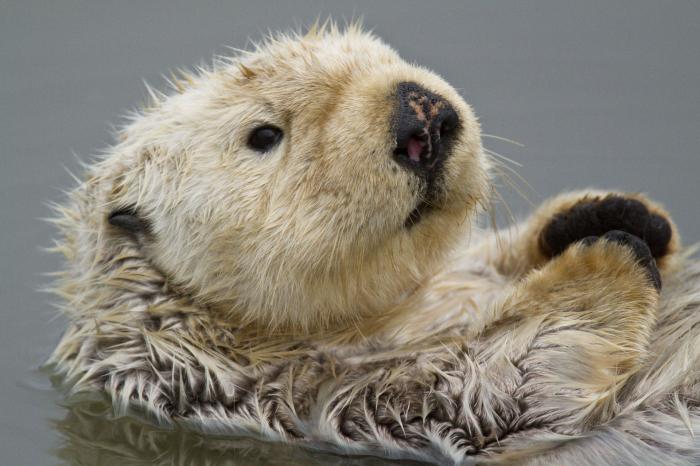
These rare species of animals in Russia in the twentieth century were included in the Red Book, as well as in the protection documents of different countries. Hunting for them in 2009 was practically prohibited in many regions of the world. Separately, it is worth noting that sea otters can be hunted only by the indigenous inhabitants of Alaska - the Eskimos and Aleuts, and only to maintain the food ration and folk crafts that have developed historically in this region.
Bison
The bison is the largest and heaviest land mammal on the entire European continent, in addition, it is the last of the wild bulls in Europe. Its body length is 330 cm, height at the withers is up to 2 meters, and its weight reaches a ton. The high density of human settlements, the destruction of forests, and, in addition, intensive hunting, have exterminated the bison in almost all European countries. At the beginning of the 19th century, wild bison remained only in 2 regions: Belovezhskaya Pushcha and the Caucasus. The number of animals then amounted to about five hundred representatives and declined over the course of a century, despite constant protection by the authorities.

In 1921, due to the anarchy of the First World War, the animals were finally destroyed by poachers. Thanks to the targeted activities of various specialists, in 1997 there were 1,096 bison in captivity in the world (nurseries, zoos and other reserves), while there were 1,829 individuals in the wild. This species is classified as vulnerable in the IUCN Red Book, while in our country it was the rarest species of animal that is in danger of extinction.
African wild dog
The hyena-like or African wild dog was once ubiquitous across the African savannas and steppes, from Sudan and southern Algeria to the southernmost tip of the continent. 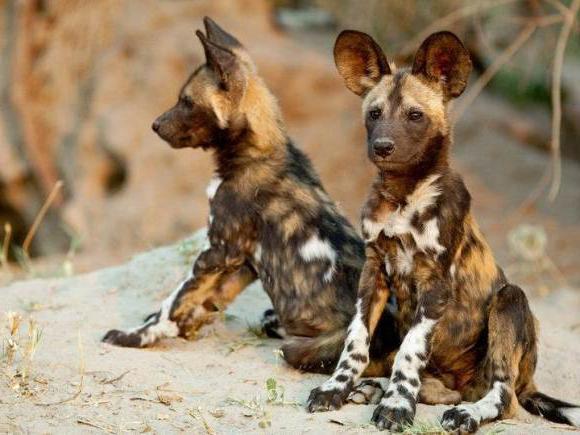
This animal was included in the Red Book as a small species that is in danger of extinction.
There are a lot of animals in Russia that are on the verge of complete extinction. Today we will talk about animals that are listed in the Red Book.
“You can control nature only by obeying it”
Francis Bacon
“Isn’t it because there are fewer and fewer storks on Earth because there are more and more people?”
Yuri Skrylev
In addition to the world of large cities, in which every day in the morning we are late somewhere in the subway, car, trams, we know every corner of a limited, boring and urbanized space - there is another world. A natural world where the king of beasts is the lion, the leader of the birds is the eagle, and the queen of flowers is the rose. And they have their own laws; man, unscrupulously invading the territory of this world, causes irreparable harm to living beings.
Of course, many have heard about the Red Book. Animals included in it are strictly prohibited from being shot and destroyed, except in cases where, for example, polar bears threaten the lives of residents of populated areas.
Red Book
There are Red Books of international, national and regional (in Russia there are more than 30 regional Red Books) scale. The national one must be republished every 10 years, but the last reissue of our national Red Book was in 2001. “The Red Book of Russia is an annotated list of rare and endangered animals, plants and fungi. In total, 8 taxa of amphibians, 21 taxa of reptiles, 128 taxa of birds and 74 taxa of mammals are listed in the Red Book of the Russian Federation, for a total of 231 taxa. The list of threatened species is established and issued under the Endangered Species Act of 1973." (Wikipedia). Despite the age of the reissue, information on the lists of species and their statuses is constantly updated.
0 - probably disappeared. Taxa and populations previously known from the territory (or water area) of the Russian Federation and whose occurrence in nature has not been confirmed (for invertebrates - in the last 100 years, for vertebrates - in the last 50 years).
1 - endangered. Taxa and populations whose numbers of individuals have decreased to a critical level such that they may become extinct in the near future.
2 - decreasing in numbers. Taxa and populations with steadily declining numbers, which, with further exposure to factors reducing their numbers, can quickly fall into the category of endangered.
3 - rare. Taxa and populations that are small in number and distributed over a limited area (or water area) or sporadically distributed over large areas (water area).
4 - uncertain status. Taxa and populations that probably belong to one of the previous categories, but there is currently no sufficient information about their state in nature, or they do not fully meet the criteria of all other categories.
5 - recoverable and recoverable. Taxa and populations, the number and distribution of which, under the influence of natural causes or as a result of conservation measures taken, have begun to recover and are approaching a state where they will not require urgent conservation and restoration measures.
(Wikipedia, “Red Book of the Russian Federation”)

In addition to the statuses on the number of natural specimens in the Red Book of the Russian Federation, there is a conservation status of animals determined by the Red Book of the World Conservation Union (World Conservation Union). Published in 2013, the update contains information on 71,576 species, of which 21,286 are threatened with extinction.
“The most famous list of conservation statuses with their ratings is the Red Book of the World Conservation Union (WUCN). It identifies categories of status, defined on the basis of both the general principles above and taking into account the individual characteristics of each type:
Disappeared (English Extinct, EX) - a species that disappeared after the death of the last animal of this species and individuals of which were not in captivity at the time of extinction. This does not include animals that became extinct for various reasons before 1500 (such as dinosaurs).
Disappeared in the wild (eng. Extinct in the Wild, EW) - a species completely exterminated in nature, but preserved in captivity.
In critical danger (eng. Critically Endangered, CR) - species, the number of individuals in nature does not exceed several hundred.
Are under threat (English: Endangered, EN) - a species whose number of individuals is quite large, but for certain reasons it cannot yet be said that it will not disappear within a few years.
Are in a vulnerable position (English Vulnerable, VU) is a numerous species, which, however, due to reasons (for example, deforestation) is still in danger.
Dependent on conservation efforts (English: Conservation Dependent, CD)
Close to vulnerable (eng. Near Threatened, NT) - a species that is almost resistant, but not yet safe.
Least endangered (eng. Least Concern, LC) - a species that is so numerous that it is doubtful that it will independently be in danger of extinction in decades. Since 2009, people have been included in this class.
Not enough data (eng. Data Deficient, DD) - species whose abundance is unclear.
Threat not assessed (English: Not Evaluated, NE) - species, information about which does not allow us to even approximately determine the threat to their existence" (Wikipedia)
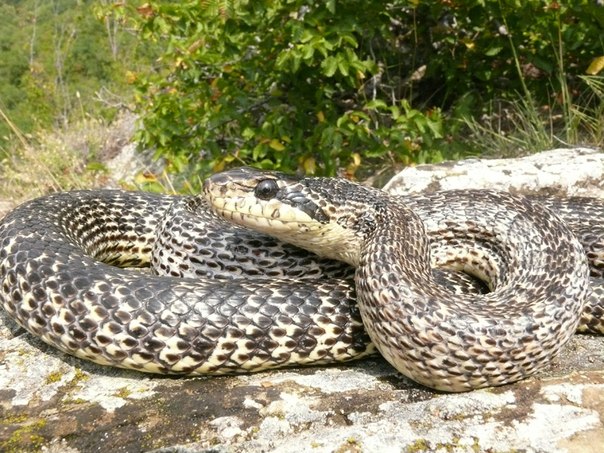
According to information from the IUCN Red List, the number of different species by category is as follows:
Total species considered 71,576
Total endangered species 21,286
Extinct - EX 799
Extinct in the Wild (EW) 61
Onedgesdisappearance(Critically Endangered - CR) 4,286
Endangered(Endangered - EN) 6,451
Vulnerable(Vulnerable - VU) 10,549
Near Threatened - NT 4,822
Low risk/conservation dependent - LR/CD 241
Minimum Risk (Least Concern - LC) 32,486
Data Deficient - DD 11,881
In Russia, according to this update of the Red Book, a total of 124 species are threatened with extinction, including 31 species of mammals, 9 species of reptiles, 36 species of fish, 8 species of mollusks, 12 species of plants and 28 other species of living creatures.
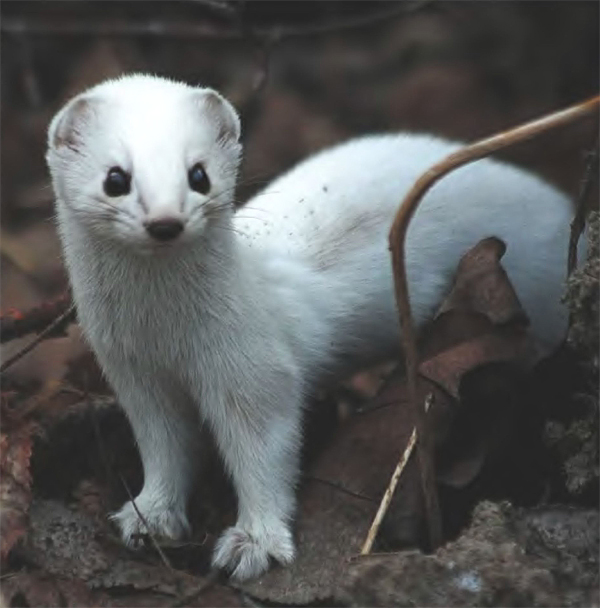
Critically endangered (CR) according to the IUCN Red Book 2013.2, there are currently 20 species in Russia.
Critically Endangered (CR) Species in Russia
Species name Scientific name Group
Coregonus trybomi Coregonus trybomi Fish
Abrau sprat Clupeonella abrau Fish
Amur sturgeon Acipenser schrenckii Fish
Lymnaea arachleica Molluscs
Beluga Huso huso Fish
Orlov Viper Vipera orlovi Reptiles
European mink Mustela lutreola Mammals
European Angelfish Squatina squatina Pisces
Kaluga Huso dauricus Fish
Caspian zebra mussel Dreissena caspia Shellfish
Persian sturgeon Acipenser persicus Fish
River eel Anguilla anguilla Fish
Russian Sturgeon Acipenser gueldenstaedtii Fish
Saiga Saiga tatarica Mammals
Sakhalin sturgeon Acipenser mikadoi Fish
Sakhalin taimen Hucho perryi Fish
Stellate sturgeon Acipenser stellatus Fish
Monk seal Monachus monachus Mammals
Thorn Acipenser nudiventris Pisces
(Information about endangered animal species from the site nature-time.ru)
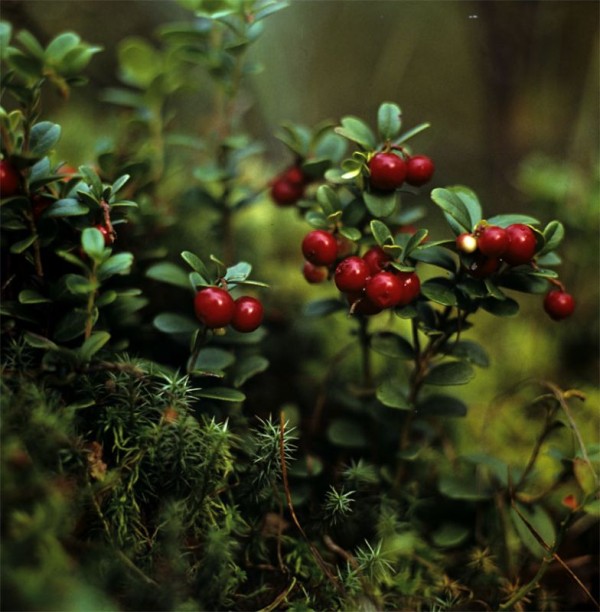
Depending on the current situation of animals of one or another status, methods are used to preserve them that help increase the population of the individual.
“In order to preserve and restore rare and endangered species, in 2004 the Ministry of Natural Resources of Russia, together with the Russian Academy of Sciences, developed a Strategy for the Conservation of Rare and Endangered Species of Animals, Plants and Fungi.
Separate strategies have also been developed to preserve the most vulnerable species - the Amur tiger, Far Eastern leopard, snow leopard, and bison. A draft Conservation Strategy for the Sakhalin musk deer and a Restoration Program for the Central Asian (Caucasian) leopard have been developed.
A set of measures is being carried out to restore the white crane - the Siberian Crane, the Great Bustard, and some species of birds of prey.
Currently in Russia, 13.5 thousand objects are classified as protected areas, occupying 12% of the country’s territory (2.1 million sq. km). Protected natural areas of federal significance include: 101 nature reserves, 39 national parks, 69 wildlife sanctuaries, 26 natural monuments.
Flora of Russia contains more than 12,500 species of wild plants, more than 2,200 species of mosses, and about 3,000 species of lichens. In the soils and water bodies of Russia there are 7-9 thousand species of algae, the number of species of fungal organisms is about 20-25 thousand.
Fauna vertebrates consists of 1513 species: 320 species of mammals, 732 species of birds, 80 species of reptiles, 29 species of amphibians, 343 species of freshwater fish. In addition, about 1,500 species of marine fish are found in the seas surrounding Russia.
Currently, 414 species and subspecies of animals and 676 plant species are listed in the Red Book of the Russian Federation "(from the website of the Ministry of Natural Resources of the Russian Federation, information from the last ten years)
According to the latest information, there are more than 500 species of animals listed in the Red Book of the Russian Federation.
There are few of us left...
Many people have heard that there are few Amur tigers left. Russian President Vladimir Vladimirovich Putin visited the Ussuri Nature Reserve (which was widely covered in the press), where the Amur Tiger program is being implemented to preserve the species. This animal is rightfully considered priceless, royally majestic... According to recent data, there are only about 450 tigers in Russia in the Primorsky and Khabarovsk Territories. The species is listed in the International Red Book.
About life next to Amur tigers with poachers in a documentary about animals:
Among the special projects for the protection of rare species of animals, information about which is posted on the website programmes.putin.kremlin.ru, there are also (except for the Amur Tiger): BELUHA - WHITE WHALE PROGRAM, IRBIS - SNOW LEOPARD PROGRAM, PROGRAM “FAR EASTERN LEOPARD”, “POLAR BEAR” PROGRAM.
All these animals are classified as endangered and the most valuable species and are included in the Russian and international Red Book. The reserves, where the strategy for the conservation of rare species is being implemented, are visited by high-ranking officials of the state, the President of the Russian Federation himself. Besides the fact that these are very beautiful, rare animals - they are the pride of our country, Russia, perhaps, cannot be more proud of anything than nature and its immense wealth, such rare, unusually beautiful specimens. Therefore, every effort must be made to preserve nature, reserves, the national bank of flora and fauna in their exclusive set, unique only to our country.
And finally, let’s take a closer look (for those who are not familiar) or remember again (for those in the know) with some of the most prominent representatives of endangered animal species in Russia. It’s difficult to tell about them all; there are more than 500 species listed only in the Red Book of the Russian Federation (not to mention the international one), but we’ll single out the most unique ones.
IRBIS (SNOW LEOPARD). A large predatory cat, almost a leopard, but with a grayish color, fluffy fur and a long tail. The average length of adult individuals is 120-125 cm, weight - 45 kg. Habitats on the territory of the Russian Federation: the upper and middle belt of the mountains of Central and Central Asia (Himalayas) and Southern Siberia (Altai, Sayan Mountains, Tuva Mountains). The size of the Russian population group of snow leopards, according to the latest official estimate by experts for 2002, was 150-200 individuals, but the current situation of these animals is deplorable: the population has decreased by three. That is, on the tops of the mountains you can only find about 50-70 snow leopards, and then they hide.
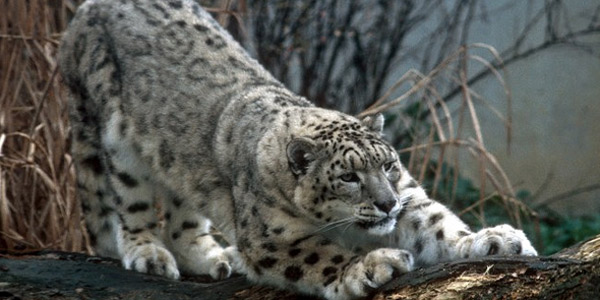

Pictured is a snow leopard
RED OR MOUNTAIN WOLF. Predator, mountain dog, body length up to 1 meter, weight 15-21 kg. A representative of the mammal family Cuon - canids. These wolves are the only individuals of this family that have survived to this day. It looks like an ordinary wolf and a fox, the color and fluffiness of the fur, the long tail are from a fox, and the appearance and habits are from a wolf. It is actively hunted by poachers and vain hunters who want to obtain stuffed animals and skins due to its beauty and rarity. It is an endangered species; the exact population could not be determined. The beast lives in Mongolia, in the Far East.
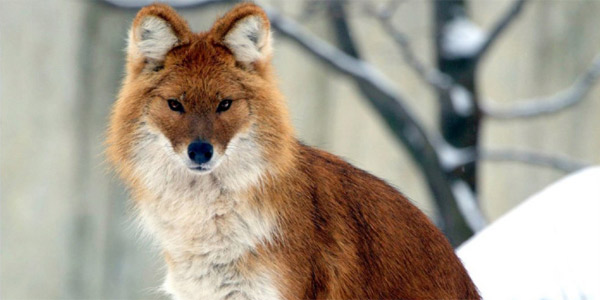
Pictured is a mountain wolf
WHITE-FACED DOLPHIN. A dolphin with a short head, weight about 250-300 kg, length - 3 meters. In Russian waters it is found in the Barents and Baltic Seas. It is not an endangered species, but a rare animal species listed in the Red Book of the Russian Federation.
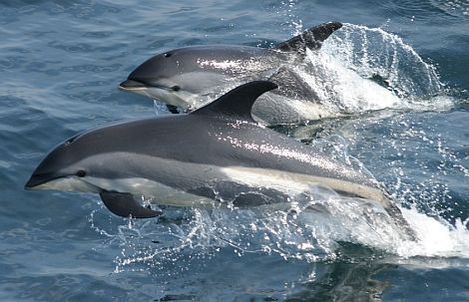

Pictured is a white-faced dolphin
FAR EASTERN LEOPARD. The species is on the verge of extinction and is listed in the Red Book of the Russian Federation and the International Red Book. All over the world (in China and Russia), there are no more than 40 Far Eastern leopards left: and 30 of them are in Russia (southwest of Primorsky Krai), protected in the Kedrovaya Pad nature reserve and the Leopardovy nature reserve. “The length of males reaches 136 cm, females – 112 cm, tails up to 90 cm and 73 cm, respectively, weight up to 53 kg or possibly up to 60 kg.” Life expectancy in reserves and in captivity is up to 20 years, in the wild 10-15 years.

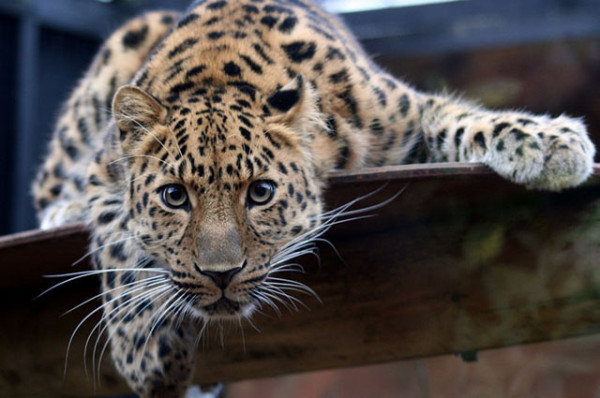
Pictured is an Amur leopard
POLAR BEAR . It lives mainly in the continental shelf zone along the periphery of the Arctic Ocean. “The weight of a large individual can reach 800 kg, on average the weight of a male is 400-450 kg, a female is 350-380 kg. Body length: for males - 200-250 cm, for females - 160-250 cm. Height at withers - 130-150 cm. The species is characterized by white fur color.
According to a group of polar bear specialists from the International Union for Conservation of Nature, approximately 20-25 thousand of these animals currently live in the Arctic region and their numbers continue to decline. At a group meeting in Copenhagen in the summer of 2009, it was concluded that the population is in critical condition” (from the website programmes.putin.kremlin.ru).
The fact is that each species has its own critical limits for population reduction; for polar bears, a number of several tens of thousands is already a trait that raises concerns for the conservation of the species.


In the photo there is a polar bear
GRAY WHALE. Gray whales live in the North Pacific Ocean from the Chukchi and Okhotsk seas to the coasts of Japan, Korea and Mexico.
The species is listed in the Red Book of the Russian Federation as rare. The gray whale is a traveler to distant horizons; it swims 7-10 km per hour; in a year it can cover 16 thousand km. They live up to 67 years.
Weight of an adult: 15–35 tons, body length for females 12–15 m, for males 11–14.6 m. The main danger for gray whales is predatory killer whales, for which the former are tasty prey.
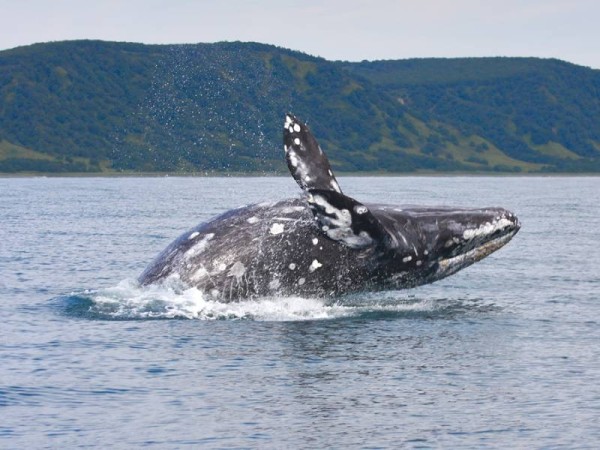
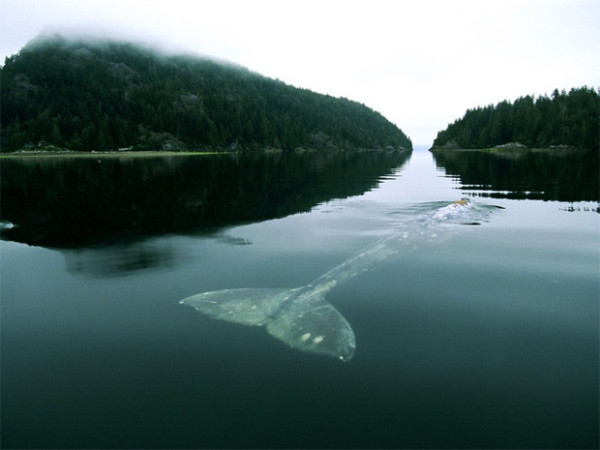
The photo shows a gray whale
SIVUCH. Northern sea lion, a huge eared seal. Lives on the Kuril and Commander Islands, Kamchatka and Alaska. The body length of an adult male sea lion is about three meters, and its weight is about a ton. Life expectancy is 25-30 years. Listed in the Red Book of the Russian Federation as an endangered species.
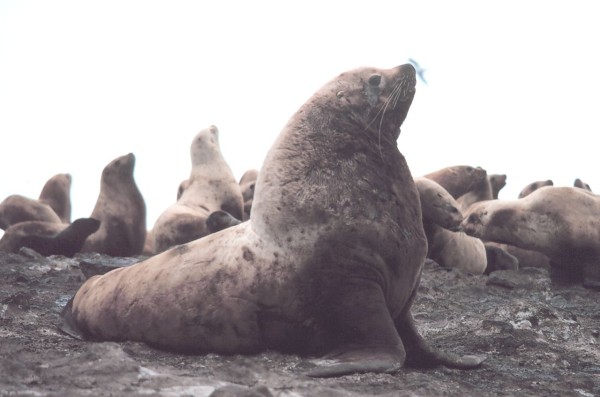
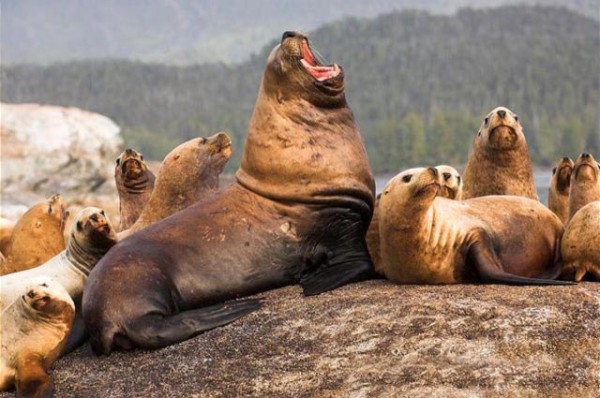
In the photo there is a sea lion
ASIAN CHEETAH. The species is endangered: there are only two dozen animals in different zoos in the world. In the past, being in the wild, it was found in the territory from the Arabian Sea to the valley of the Syrdarya River. There are no more than a dozen individuals left in nature.
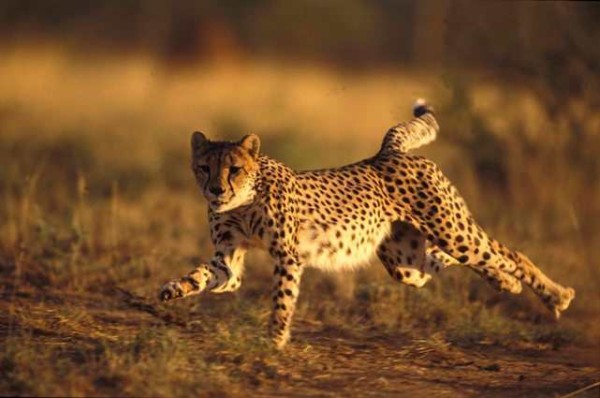
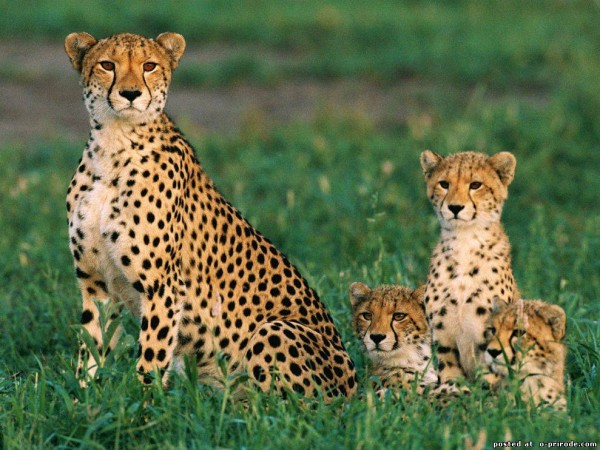
Pictured is an Asiatic cheetah
MANUL. A large fluffy, long-haired wild cat. Weight no more than 5 kg, body length no more than 60 cm. Lives in Tyva, the Altai Republic and Transbaikalia, Chita region. Listed in the Red Book as a rare species.
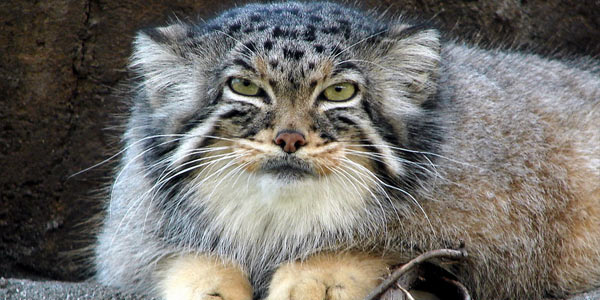

In the photo there is a manul
ATLANTIC WALRUS. Pinniped mammal. Males weigh from 1000 to 2000 kg, females from 400 to 550 kg, body length 2-3.5 m. Lives in the Barantsev and Kara Seas. It was practically destroyed by poachers in the middle of the 20th century; now, thanks to the efforts of specialists, the population is slowly recovering.
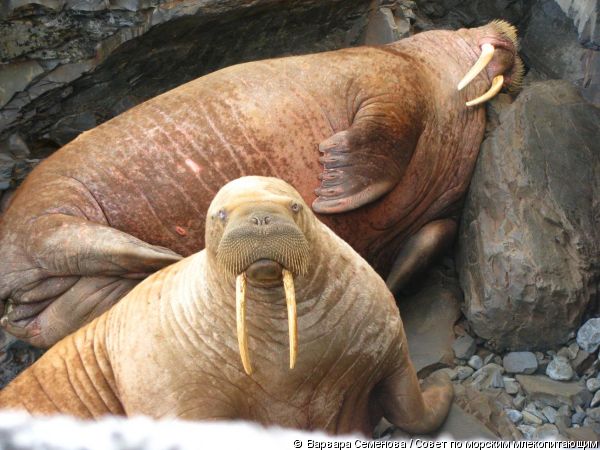

The photo shows an Atlantic walrus
WHITE CRANE (Siberian Crane). The Siberian Crane is an exclusively Russian bird; it builds nests only on the territory of the Russian Federation. The size of the Yakut population is estimated at 2900-3000 individuals, but there are only about 20 individuals left of the West Siberian Siberian Cranes.

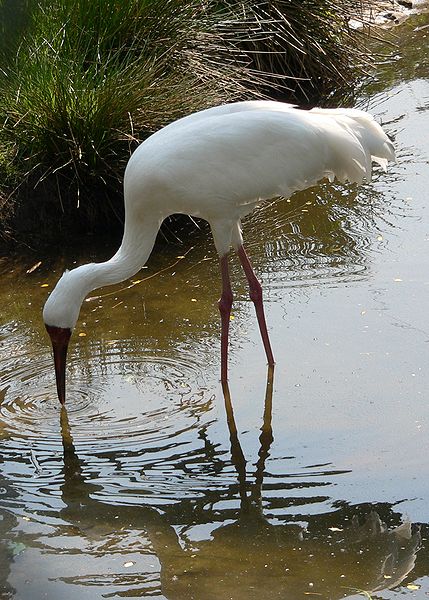
In the photo there is a white crane
FAR EASTERN STORK (black-billed stork). The Russian population today numbers about 3,000 individuals. Storks make nests in the Far East (Primorye, Ariamurye), winter in the south and southeast of China, in ponds and rice fields. In the Red Book of the Russian Federation, the bird is classified as an endangered species.
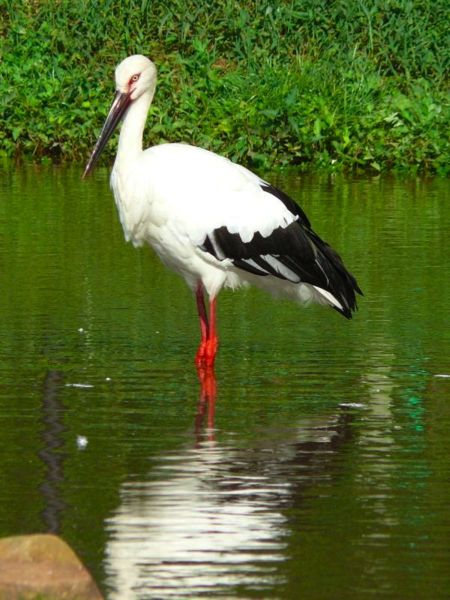
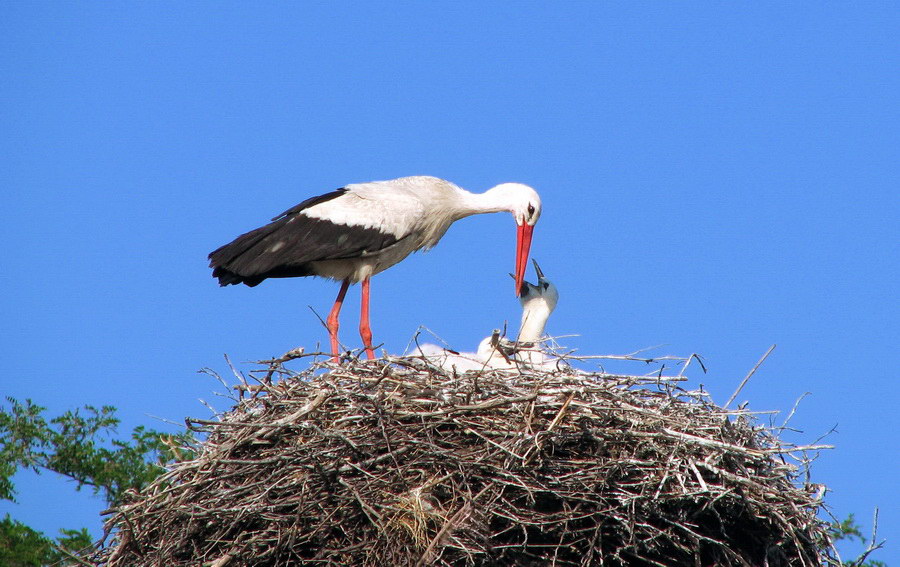
Pictured is a Far Eastern stork
AMUR GORAL (eastern goral). A species of mountain goat, living in Primorye, is united in groups of 6-8 individuals. In Russia, in the Far East, there are only about 600-750 gorals left (most of them are in nature reserves and sanctuaries).
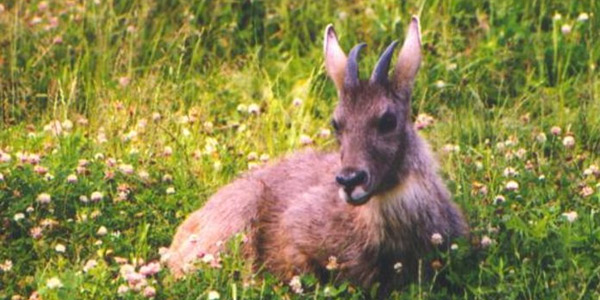
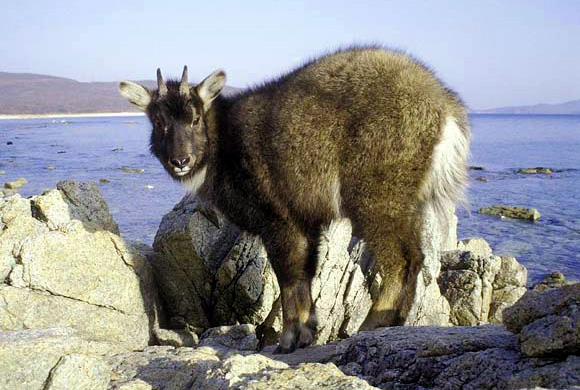
In the photo there is an Amur goral
BELUHA (WHITE WHALE). The animal is not listed in the Red Book, the population is not in danger of extinction today, licenses are issued annually to shoot one and a half thousand individuals, but nevertheless, Belukha is the pride of the country, or more precisely, of Russian waters.
Marine mammal, representative of the narwhal family, suborder of toothed whales, order Cetaceans.
“This species of marine mammal is distributed very widely - circumpolarly - the beluga whale is found in all coastal waters of the seas of the Arctic basin, as well as the White, Bering and Okhotsk seas. The white whale is not a rare species. In terms of its position in the food chain and level of development, the beluga whale can be compared to a person - it, just like a person, is the top of the trophic pyramid. With the exception of a few areas where the killer whale lives, the beluga whale has no natural enemies or competitors” (from the website programmes.putin.kremlin.ru)
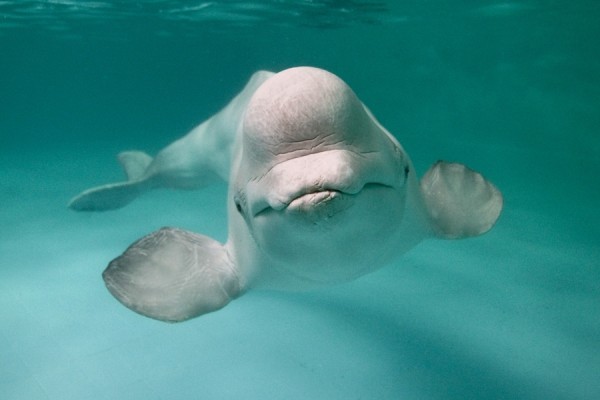
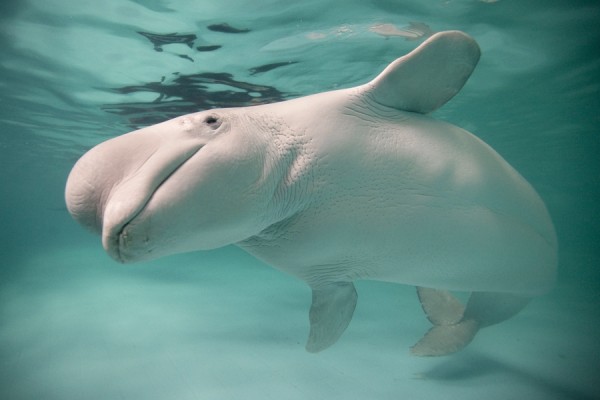
In the photo there is a beluga whale
Nature is a treasure trove. Both life and wealth, not expressed in monetary terms.
The reasons for the extinction of rare animal species are pragmatic: people and harmful effects on the environment are to blame.
The status “there are only a few of us left” is always a signal that the species may become extinct. And when nature disappears, it is a big loss for the world as a whole, because man with his technological progress will outweigh, and not in a good way. Save nature.
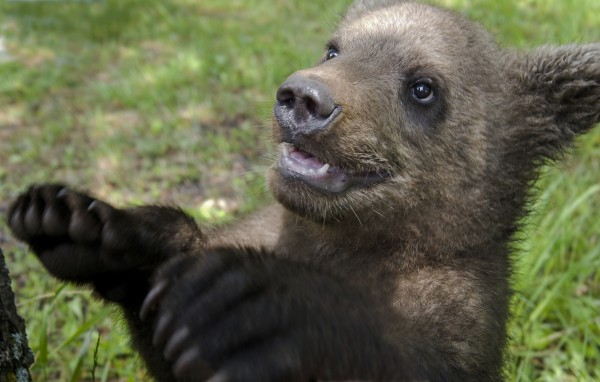
Pictured is Brown Bear

Pictured is the Amur tiger
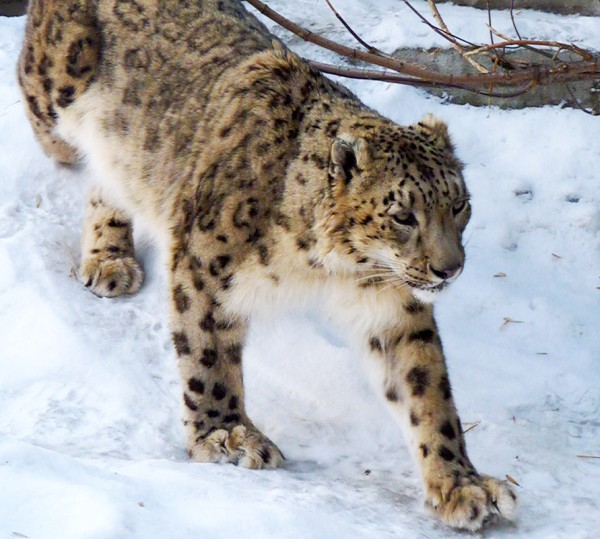
Pictured is a Snow Leopard
Readers saw the first official publication on the shelves in 2001. The Red Book of Russia is a collection in which the rarest animals, their photos and descriptions are listed.
In total, there are 259 vertebrate animals, 39 species of fish, 21 species of reptiles, 65 species of mammals, 123 species of fish, 8 species of amphibians inhabiting even the most remote and harsh regions of Russia.
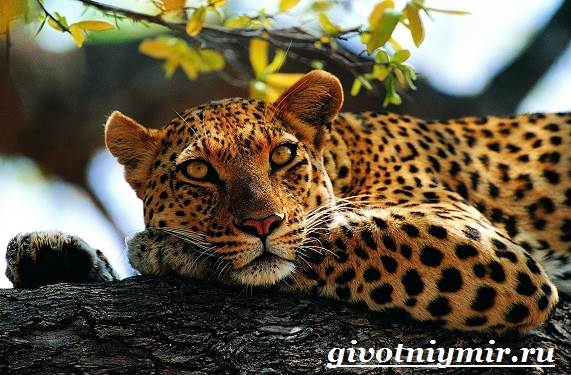
Unfortunately, over the past few years the world has lost a huge number of unusually beautiful species of animals - insects, birds, animals, and inhabitants of mountain ranges.
The book was created with the aim of protecting endangered and endangered animals and birds, as well as plants for various reasons. Below you will find interesting information, descriptions and photos of the most majestic and interesting representatives of the Red Book.
Mammals of the Red Book of Russia
Altai mountain sheep is the owner of the largest horns of all representatives of the genus.
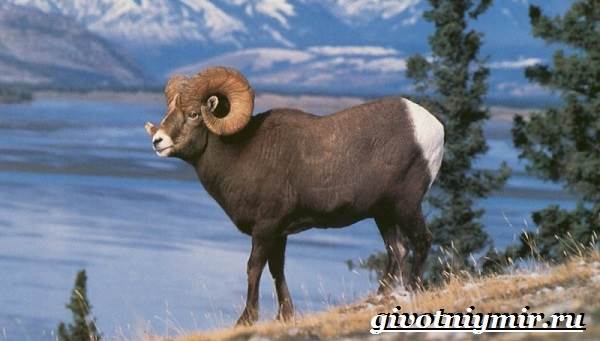
Amur Steppe polecat has a very low population, and since the 50s the risk of extinction has only been increasing.

Amur tiger. Speaking about this Far Eastern king of animals, living in the Ussuri Forest, it should be noted that among the animals in the Red Book of Russia there are a lot of names of felines. - the largest, the only species of tiger that has mastered life among crystal white snow and low temperatures.
In such difficult conditions, hunting becomes a difficult task for the Amur tiger; only one attempt out of ten is successful. They track deer and are able to catch fish during spawning. This unique animal of the Red Book is the real pride of Russia. Now the population is increasing in number, approximately 450 tigers live in the wild forests of the Far East and.
The cubs appear in April-May, blind and very tiny. A caring mother tiger carefully monitors their diet and teaches them the basics of hunting. Already at six months, mischievous tiger cubs help the tigress on the hunt and are able to obtain food on their own.
Hunting for these rare mammals is strictly prohibited in Russia, and in China the death penalty awaits a poacher for killing a tiger.
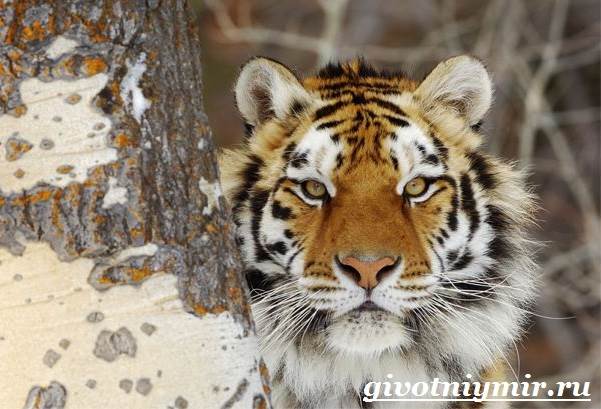
White-faced dolphin. We can find another extremely rare species on the pages of the Red Book of Russia - the white-faced dolphin. You can sometimes meet him in dolphinariums; he is quite sociable and curious when interacting with people, but conditions in captivity are difficult to tolerate.
These animals live in the Barents and Baltic seas, in the Davis Strait, and Cape Cod. They live in groups of 6 – 8 individuals, the body length reaches three meters in length.
This species is under threat due to water pollution with chemicals and heavy metals, as well as due to hunting in the waters of Great Britain and the Scandinavian countries. These highly organized marine mammals are very mysterious and little studied.
To this day, scientists are wondering what is the reason for their mass strandings on land, why they save people after tragic crashes at sea. We are yet to get a detailed acquaintance with these extraordinary animals, which distinguish each other not only by sounds, but also by names.
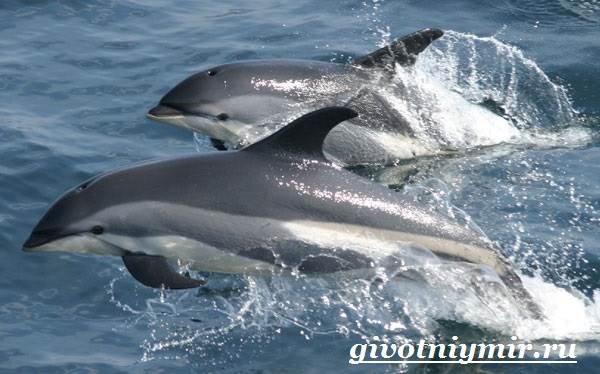
White-sided dolphin. The main difference between the Atlantic whiteside is the large white or beige spot that starts on either side of the dorsal fin and extends along the entire body.
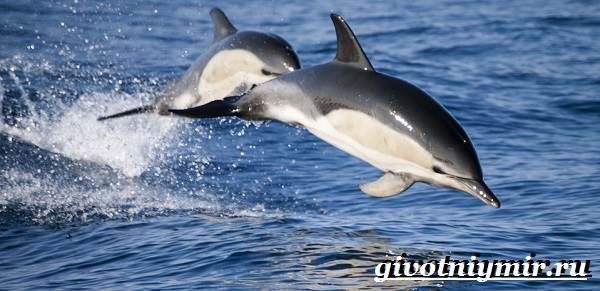
Polar bear. This animal is the largest species. Its size is even larger than that of the mighty North American one.
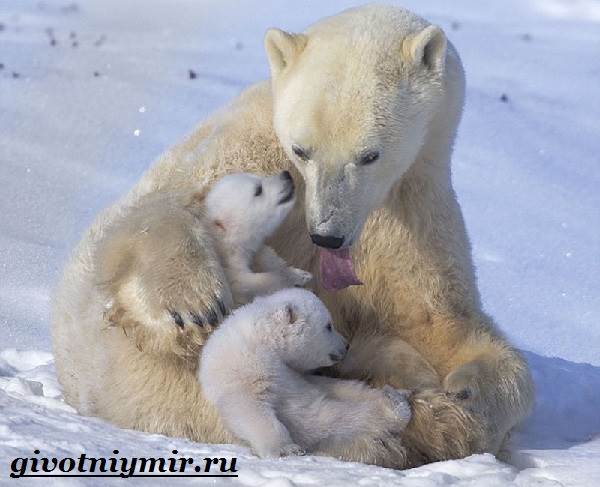
Great horseshoe bat represents the largest family of .

Giant shrew. The main reason for the disappearance of the population is massive deforestation. can be saved only in conjunction with general protection measures for ecosystems.
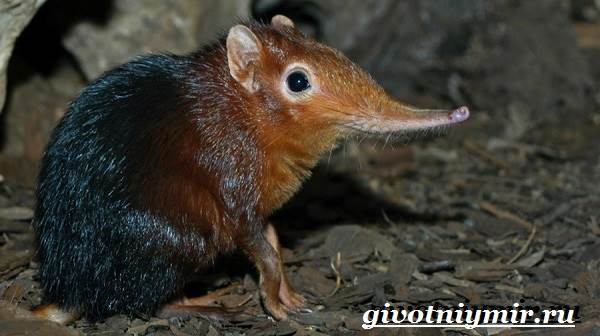
Gorbach got its name from its swimming style - when swimming, it strongly arches its back.
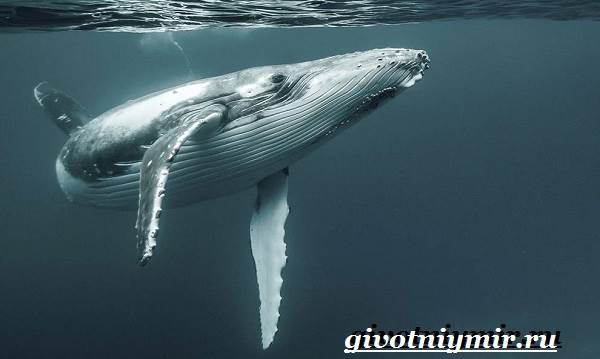
Daurian hedgehog less prickly than the regular one, since its needles are directed backwards.
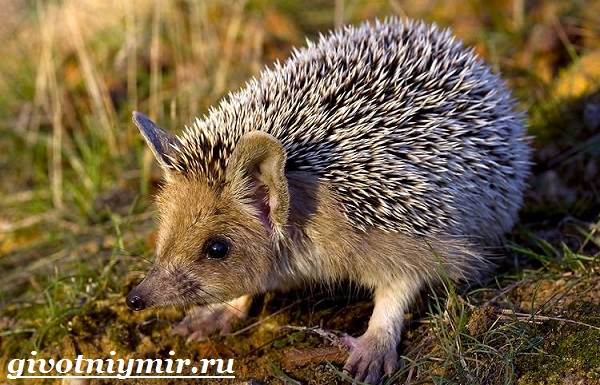
Dzeren(toothed antelope) Toothed antelopes are characterized by high endurance and mobility.
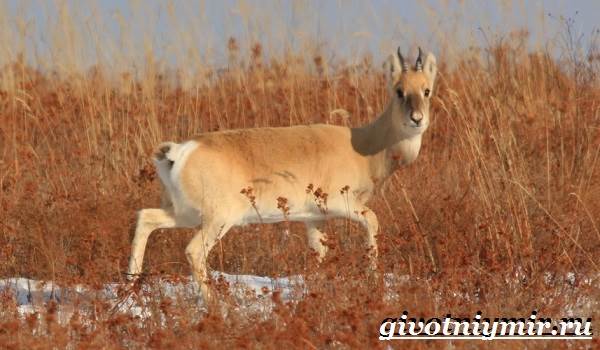
Yellow variegated. The number of yellow pieds is negatively affected by livestock grazing and drying up of drinking water sources, which is mainly due to the fault of people.

Bison contemporary of the mammoth. They are deservedly considered the rulers of the forest thanks to the amazing power, strength, and greatness of this beast.
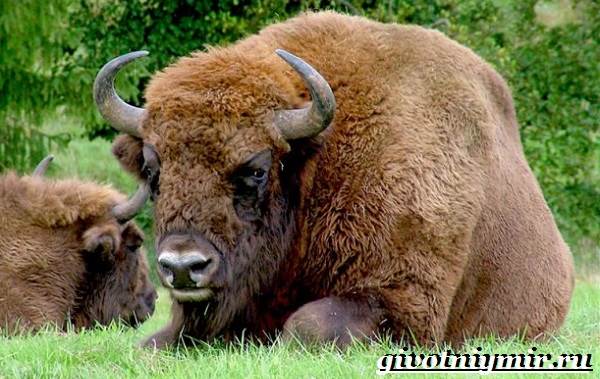
Caucasian forest cat the largest among the species.
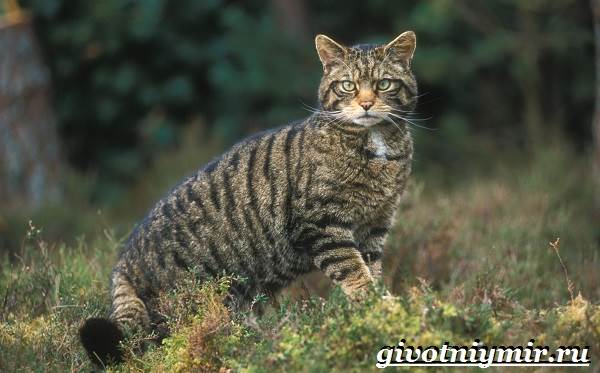
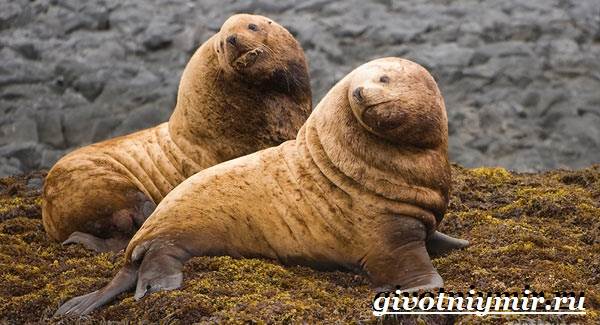
Snow Leopard, he is called the “master of the mountains”, he is its permanent inhabitant.
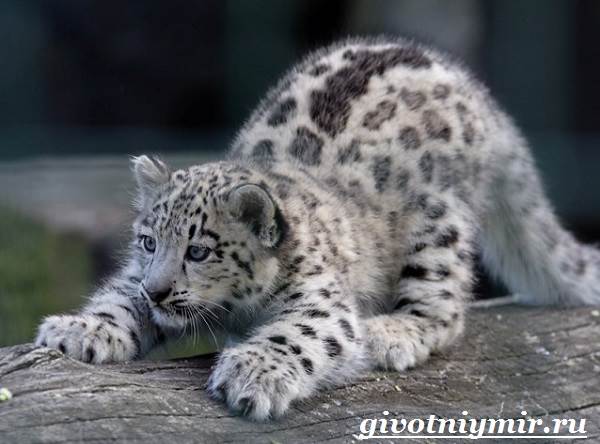
Birds listed in the Red Book of Russia
Avdotka bird. It can be seen quite rarely, since the back is sandy-gray with black stripes, which allows it to perfectly camouflage among dry grass.


Annelids
Zheleznyak an annelid with a dense body.

We have talked only about a small part of the contents of the Red Book of Russia; inquisitive readers will probably want to have it in their library.

